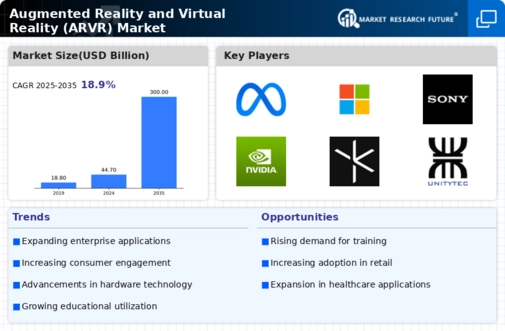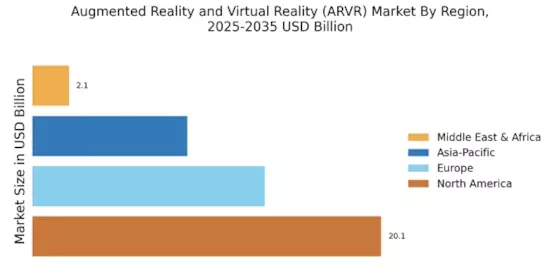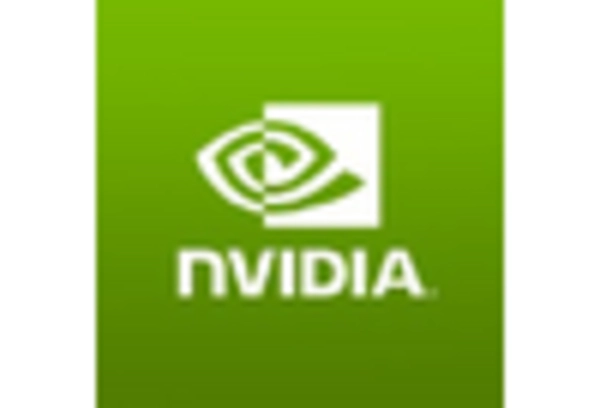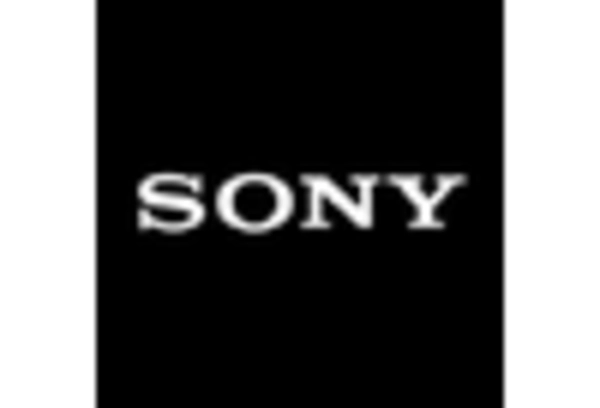Increased Investment in ARVR Startups
Investment in the Augmented Reality and Virtual Reality (ARVR) Market is witnessing a notable increase, as venture capitalists and tech giants recognize the potential of ARVR technologies. In recent years, funding for ARVR startups has surged, with billions of dollars allocated to innovative companies developing cutting-edge applications. This influx of capital is likely to accelerate the pace of innovation, leading to the emergence of new products and services that cater to diverse consumer needs. The growing interest from investors suggests a strong belief in the long-term viability of ARVR technologies, which could further stimulate market growth and encourage the development of more sophisticated ARVR solutions.
Rising Demand for Immersive Experiences
Consumer demand for immersive experiences is a significant driver in the Augmented Reality and Virtual Reality (ARVR) Market. As individuals seek more engaging and interactive content, businesses are increasingly adopting ARVR technologies to enhance customer experiences. This trend is particularly evident in sectors such as retail, where AR applications allow customers to visualize products in their environment before making a purchase. Market data indicates that the ARVR market is expected to grow at a compound annual growth rate of over 30% in the coming years, reflecting the increasing consumer appetite for immersive experiences that ARVR technologies can provide.
Technological Advancements in ARVR Devices
The Augmented Reality and Virtual Reality (ARVR) Market is experiencing a surge in technological advancements, particularly in hardware and software. Innovations such as improved display technologies, enhanced processing power, and more sophisticated sensors are driving the development of ARVR devices. For instance, the introduction of lightweight headsets with higher resolution displays has made immersive experiences more accessible. According to recent data, the market for ARVR devices is projected to reach a valuation of over 200 billion dollars by 2025, indicating a robust growth trajectory. These advancements not only enhance user experience but also expand the potential applications of ARVR across various sectors, including gaming, education, and training.
Expansion of ARVR in Entertainment and Gaming
The entertainment and gaming sectors are pivotal in driving the growth of the Augmented Reality and Virtual Reality (ARVR) Market. With the increasing popularity of immersive gaming experiences, developers are investing heavily in ARVR technologies to create captivating content. The rise of multiplayer ARVR games and interactive storytelling is attracting a broader audience, thereby expanding the market. Recent estimates suggest that the gaming segment alone could account for a substantial portion of the overall ARVR market revenue, highlighting its significance. As technology continues to evolve, the potential for innovative gaming experiences will likely further propel the growth of the ARVR market.
Integration of ARVR in Training and Simulation
The integration of Augmented Reality and Virtual Reality (ARVR) technologies in training and simulation is transforming the way organizations approach employee development. Industries such as aviation, healthcare, and manufacturing are leveraging ARVR to create realistic training environments that enhance learning outcomes. For example, ARVR simulations allow trainees to practice complex procedures in a safe and controlled setting, reducing the risk of errors in real-world applications. The Augmented Reality and Virtual Reality (ARVR) Market is likely to benefit from this trend, as more companies recognize the effectiveness of ARVR in improving training efficiency and effectiveness, potentially leading to a more skilled workforce.


















Leave a Comment